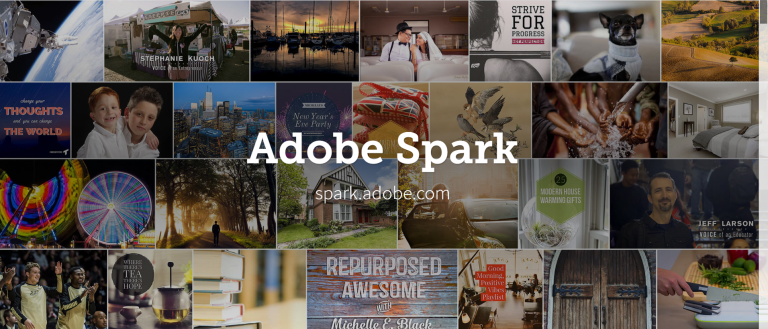Typography is the foundation of graphic design; it is essential for expressing ideas, building brand identities, and producing compositions that are visually striking. Typography trends in the dynamic field of design are constantly changing to reflect changes in aesthetics, technology, and cultural influences. In addition to examining current typographic trends, this article provides designers with useful advice on how to produce visually compelling content.
Typography Trends:
Table of Contents
Flexibility with Variable Fonts
This important trend enables designers to use several different font styles in a single file. Because of its adaptability, designers can experiment with weight, width, and other characteristics, giving them more creative freedom and responsiveness across a range of screens and devices.
Maximalism and Playful Typography
Unlike the current minimalist fads, maximalist strategies are becoming more and more popular. Playful typography gives designs a dynamic and energizing quality. It is typified by vivid colors, strong letterforms, and unusual layouts. By embracing the notion that more is more, this style inspires designers to push the envelope of creativity.
Handwritten and Custom Fonts
The demand for individuality has resulted in a rise in the utilization of handwritten and custom fonts. Custom typefaces are being commissioned by designers and brands as a way to set themselves apart and promote individuality and authenticity. In digital environments, handwritten fonts add a human touch thanks to their organic and flawed characteristics.
Responsive Typography:
This is crucial for cross-platform consistency because a variety of screen sizes and resolutions are common. Fluid fonts, which adapt to various devices with ease and ensure a uniform and readable experience across platforms, are becoming increasingly popular among designers. The emphasis of this trend is adaptation in the growing multi-device digital environment.
Serif Fonts in Digital Spaces:
Previously only seen in print, serif fonts are now being used more often in digital design. The finer points of serifs can be seen on the high-resolution screens of contemporary gadgets, giving online information a more sophisticated appearance. The idea that sans-serif fonts are always the best option for digital legibility is being questioned by this trend.
Tips for Effective Typography in Graphic Design:
Hierarchy and Readability:
A clear hierarchy must be established in order for communication to be effective. To draw the viewer’s attention, use different font weights, styles, and size adjustments. Make sure the content is readable by using the right fonts and keeping the backdrop and text contrast high enough.
Consistency:
A robust brand identity is developed through consistency in typography. Choose a group of typefaces that complement the characteristics of the brand and utilise them consistently on a variety of communication platforms. Maintaining a consistent font style helps consumers recognise a brand and strengthens the visual language connected to it.
Mindful Kerning and Leading:
A design’s overall aesthetics and legibility depend greatly on careful consideration of kerning (the spacing between letters) and leading (the space between lines). By modifying these components, you can avoid uncomfortable spacing problems, improve the text’s flow, and increase the overall visual attractiveness.
Embrace White Space:
White space, or negative space, is as crucial as the text itself. Embrace white space to provide visual breathing room, enhancing readability and focusing attention on key elements. Thoughtful use of white space contributes to a clean and sophisticated design.
Understand the Context:
Consider the context in which the design will be experienced. Different mediums, such as print, web, or mobile, may require adjustments in typography for optimal legibility and impact. Additionally, understanding the cultural context is essential to avoid unintended misinterpretations.
Experiment with Font Pairing:
Effective font pairing can elevate a design. Experiment with combining serif and sans-serif fonts, or mix different styles within the same category. Aim for complementary pairings that enhance visual interest without sacrificing readability.
Limit Font Choices:
Although diversity is important, too many font options can cause visual chaos and incoherence. If you want to keep a design’s aesthetic cohesive and harmonious, use fewer fonts. A more powerful graphic message can be produced by carefully combining a few different typefaces.
Test Across Devices and Platforms:
Typography must be tested in a variety of situations because to the wide range of devices and platforms. Make sure that fonts display well and are readable across a range of screens and resolutions. To provide a consistent user experience in responsive design, this step is especially crucial.
Keep Up with Trends:
As the design world changes, it’s critical to keep up with the latest typographic trends in order to stay relevant. Nonetheless, trends must be viewed critically, taking into account how well they complement the goals of the project or brand.
Accessibility:
It’s important to design with accessibility in mind. Use readable typefaces for all users. Think about things like legibility for people with vision impairments, contrast, and font size. Give inclusivity a priority in design to make sure a wide range of users have a good experience.
Wrapping Up
In the hands of graphic designers, typography is an effective instrument that shapes the way people see and process information. A designer can produce visually arresting and powerful communication by following basic design principles and remaining aware of changing trends. Whether you go for responsive typography, embrace the boldness of maximalism, or play around with unique fonts, the secret is making deliberate and purposeful design decisions. Typography continues to be a dynamic and essential part of the ever-changing graphic design scene as technology and design progress.




